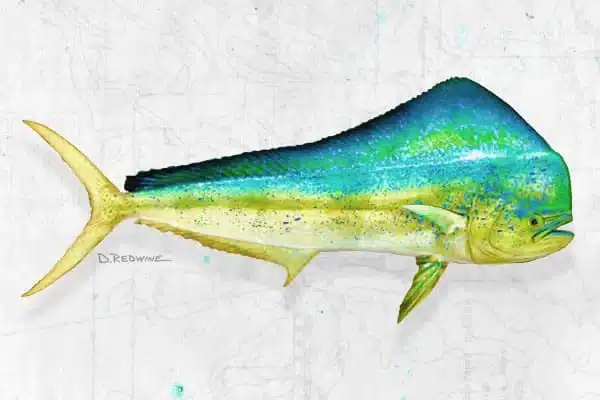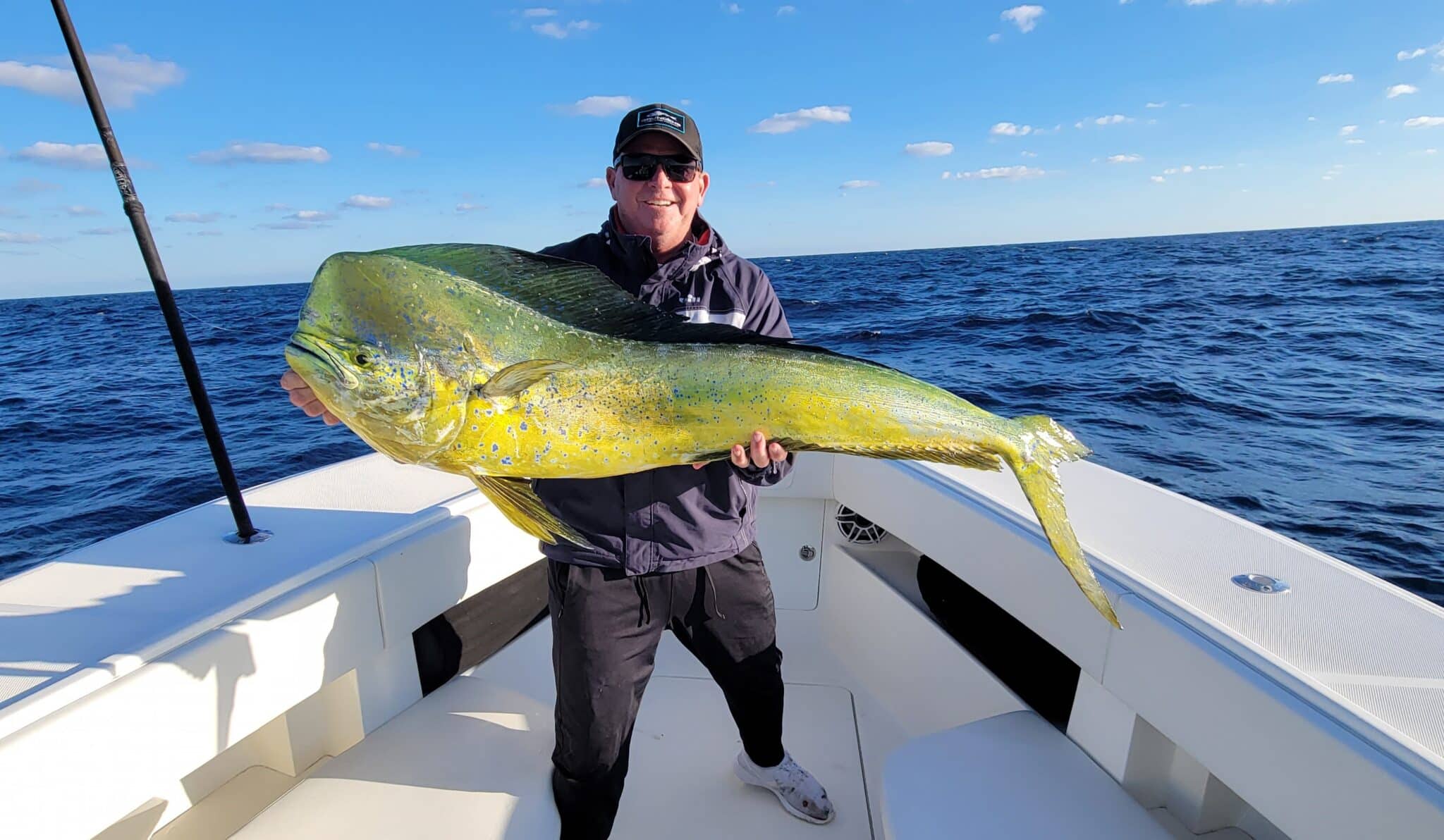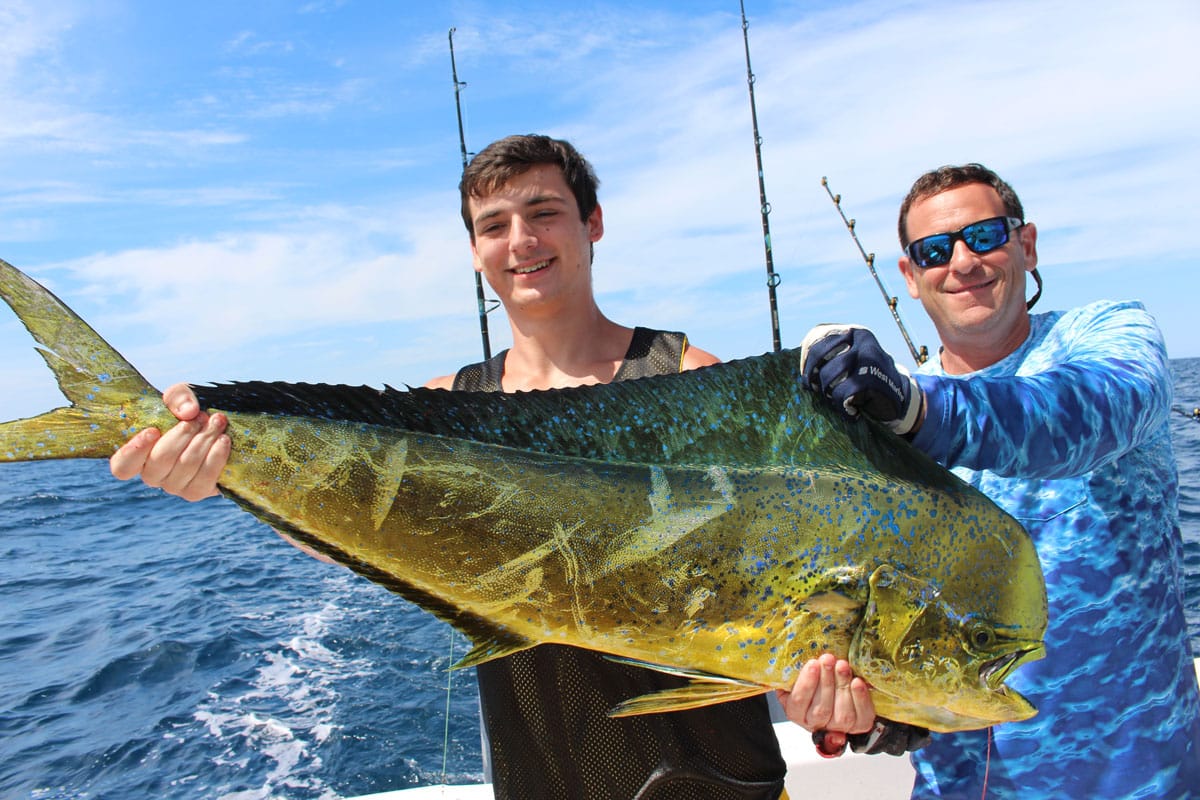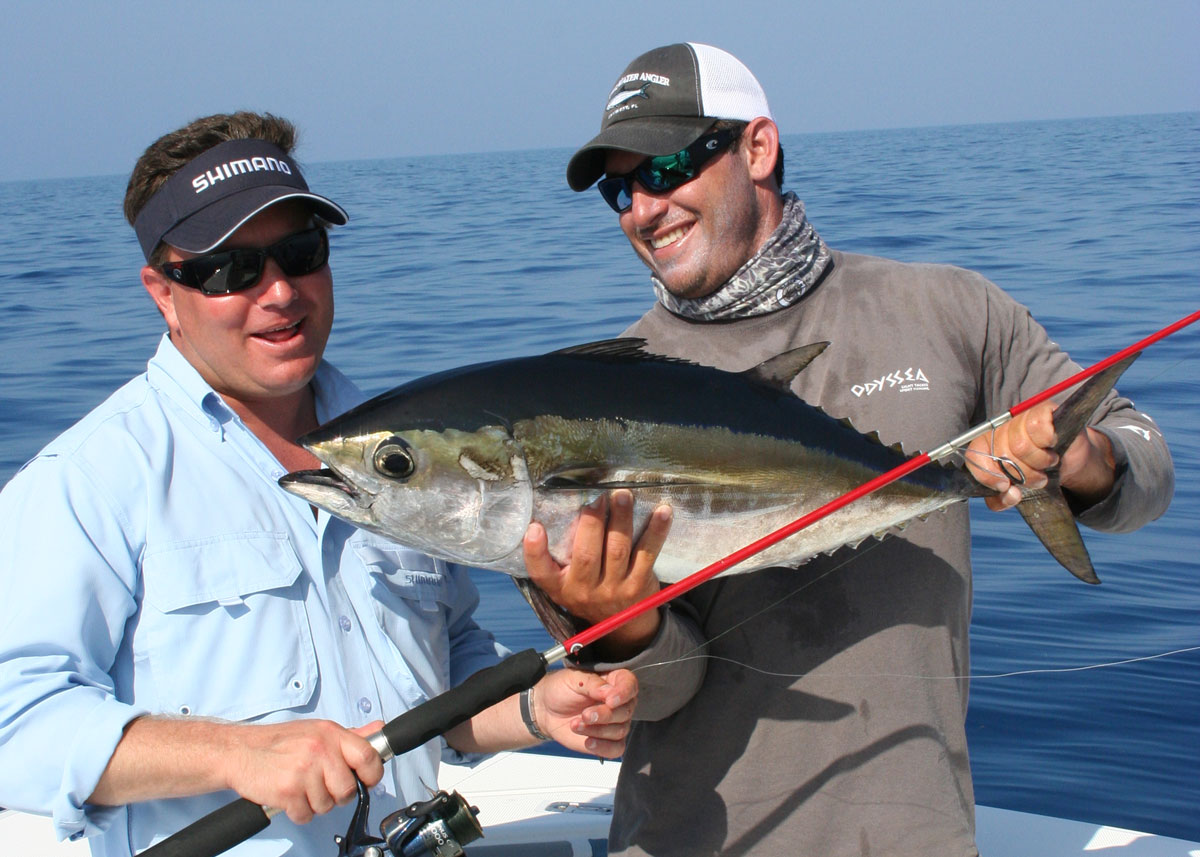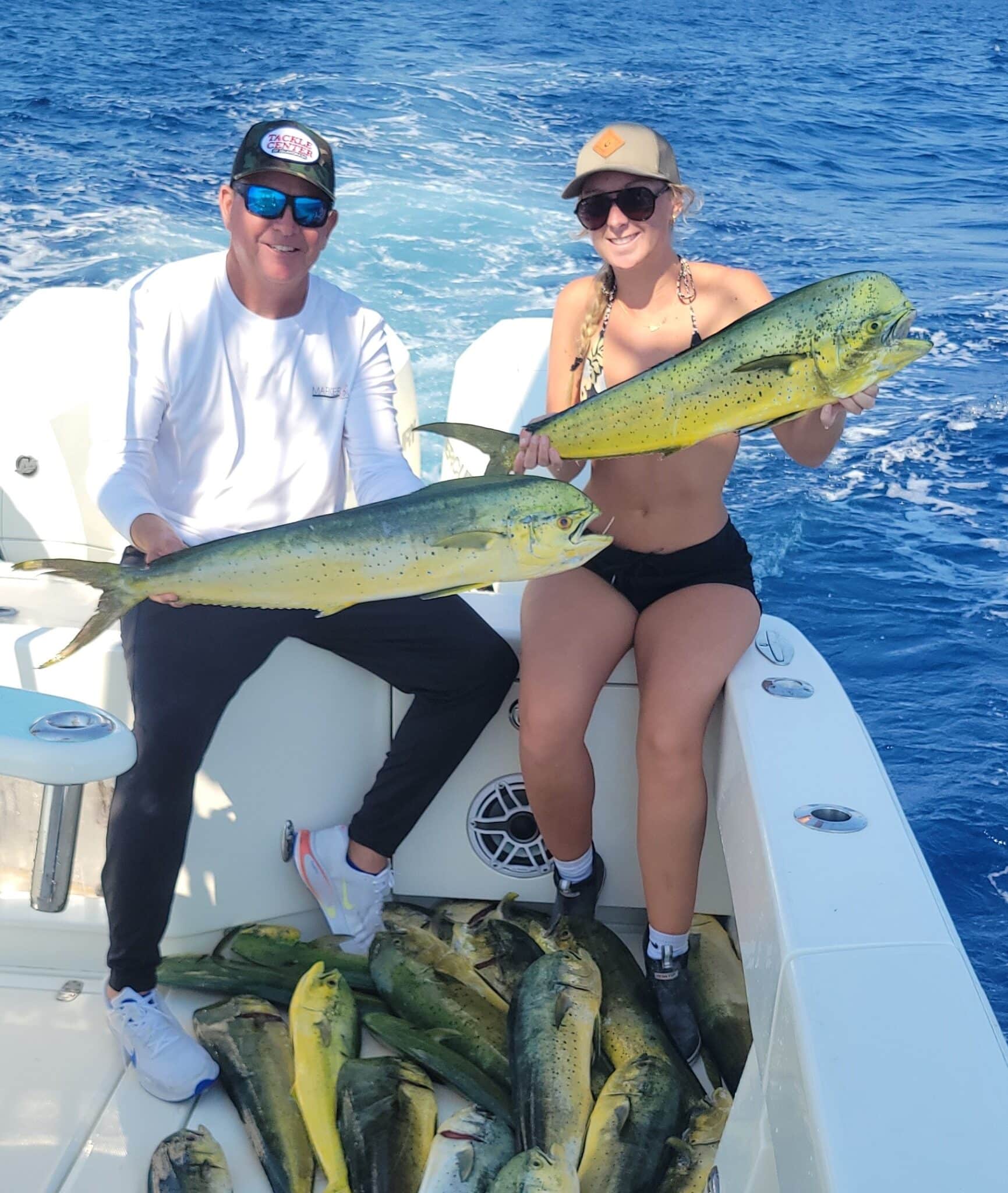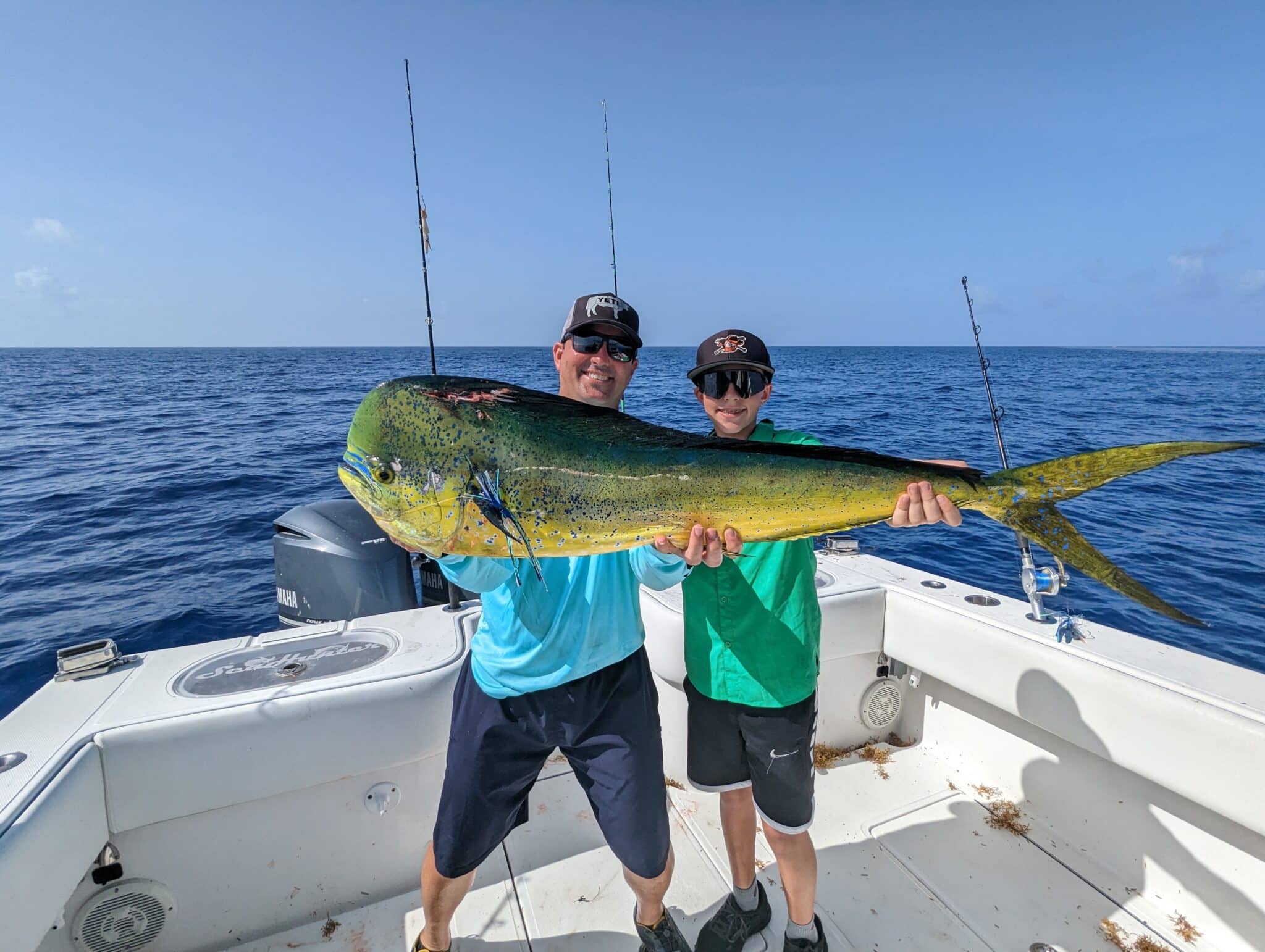Description
The mahi-mahi, also known as dolphin or dorado, is one of the most sought-after sportfish for its acrobatic fight, beauty, and excellent eating. The mahi-mahi is a prolific fish of blue, yellow, and green coloration with patterns of blue and purple dots that can flash when the fish is excited. The male fish has a tall, blunt forehead compared to the more rounded head of the female. They are fast growers and voracious eaters. They are thought to only live 4 to 5 years old and can reach a weight of over 80-pounds. Mahi-mahi are open-ocean fish that occur in most temperate and tropical waters of the world. Due to their voracious appetite, fishing methods vary with location and conditions. Trolling with baits and lures is highly effective when fishing current edges and weedlines. Mahi are often attracted to the bait that collects under both natural and man-made floating objects and can be a day maker for lucky anglers.
Ideal Conditions for Mahi-Mahi
SatFish maps show you where to find ideal conditions for Mahi-Mahi:
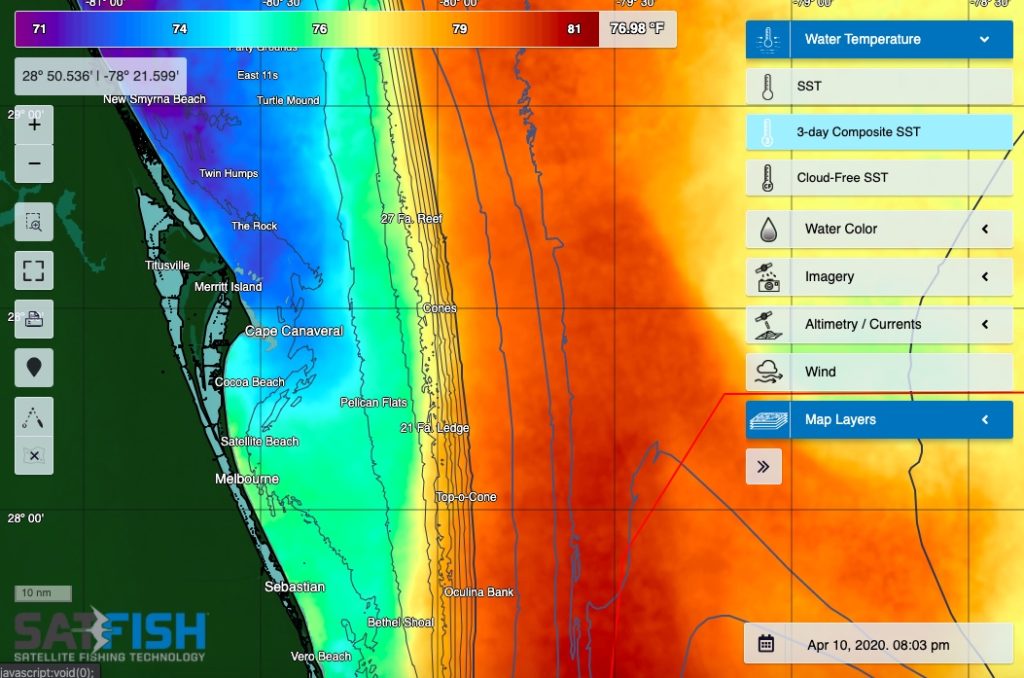
- Sea Surface Temperature: 65-85F / 18-29C (70-78F / 21-26C is ideal)
- Water Color / Chlorophyll: Clean purple-blue to off-blue, occasionally into slightly greener water if that’s where the food is. 0.01-5.0 mg/m3 (near color changes is ideal)
- Current: Breaks, eddies, and convergence zones where water flow changes abruptly and gathers flotsam
- Bathymetry: Typically less important than finding current breaks and flotsam like weed lines or kelp paddies
Mahi-mahi thrive in warm, tropical waters and are often found around a wide range of offshore features when conditions are right. Floating structures like kelp paddies, sargassum weedlines, logs, and other flotsam are prime habitats, especially when they drift along current edges and temperature breaks. These areas often trigger upwelling, drawing in nutrient-rich water that supports dense schools of baitfish—exactly what mahi are looking for. It’s common to find mahi patrolling these floating structures, picking off finbait and small prey hiding beneath. Whether you’re trolling along a weedline or spotting free-swimmers near debris, targeting these productive zones can turn an average day offshore into an epic mahi bite.
Mahi-Mahi Migration Patterns
Mahi-mahi are distributed globally in tropical and subtropical waters. In the western Atlantic, they are commonly found in the Gulf of Mexico, off Florida, and throughout the Caribbean, with higher abundance from spring through fall. As water temperatures rise, mahi extend their range northward, riding warm currents like the Gulf Stream into waters off the Carolinas, the Mid-Atlantic, and even into the Northeast Canyons by late summer. In winter, they typically shift southward again.
In the eastern Pacific, mahi are seasonally present off Baja California and Southern California, usually from late spring through early fall, following the northward push of warm water. The Sea of Cortez also provides productive habitat due to warm temperatures and rich forage availability. Spawning is closely tied to temperature and occurs year-round in warm waters, with peaks in late spring and early summer. Females may spawn every two to three days during peak season.
SatFish Regions where Mahi-Mahi can be found:
- Southern California (most common late spring – fall)
- Baja (all regions)
- Gulf of Mexico (all regions)
- Florida (all regions)
- Hawaii (all regions)
- Puerto Vallarta
- North Carolina
- South Carolina/ Georgia
- NE Canyons
- Cape Cod/Georges Bank (late summer-fall)
- Bahamas
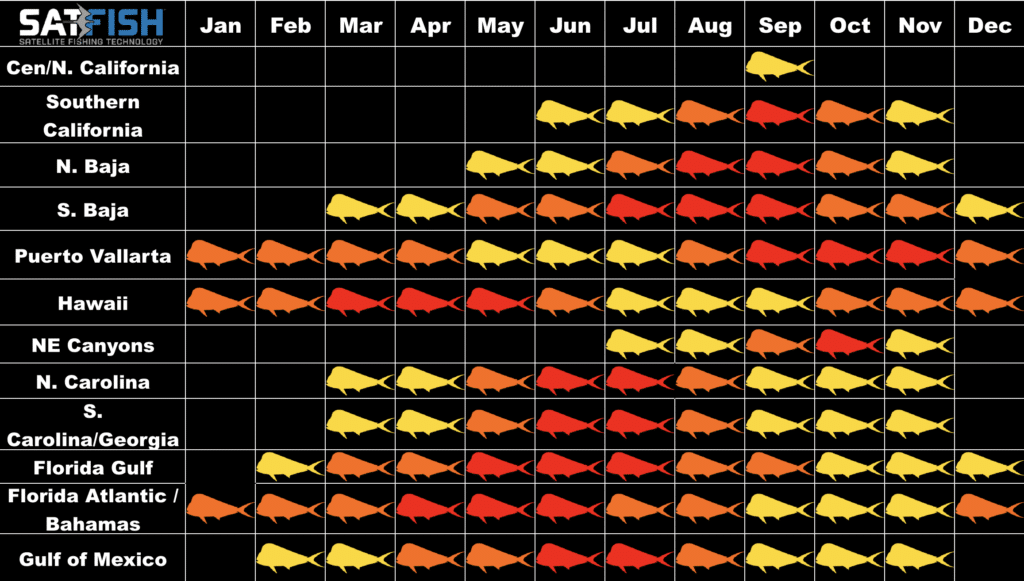
How to Catch Mahi-Mahi
Mahi-mahi are fast-moving, schooling fish that often travel in groups, especially when they’re near floating debris or weedlines. Smaller mahi tend to show up in larger numbers near surface structure, while the big bulls are often just outside the main pack or circling deeper. If you find one, there’s usually more close by — so it pays to keep a hooked fish in the water while you gear up for another strike.
Here are some proven techniques to target mahi-mahi:
Trolling: One of the most effective ways to find mahi offshore. Run brightly colored feathers, skirted lures, or rigged ballyhoo along temperature breaks, weedlines, or current rips. Focus on areas where floating debris stacks up.
Casting Near Paddies and Weedlines: When you spot a kelp paddy, sargassum line, or any offshore flotsam — especially with birds nearby — cast jigs, poppers, or small stickbaits right up to the edge. Mahi often rush out from underneath the cover to smash a well-placed lure.
Live Baiting: If you’re on a kelp paddy or weedline, live sardines, pilchards, or small mackerel can be deadly. Pitch a bait to the edge of the structure and get ready — mahi usually won’t hesitate.
Bird Activity & Open Water Sightings: Sometimes mahi will free-swim or blitz bait out in the open. Look for diving birds or surface commotion. Casting lures ahead of the action can draw violent strikes.
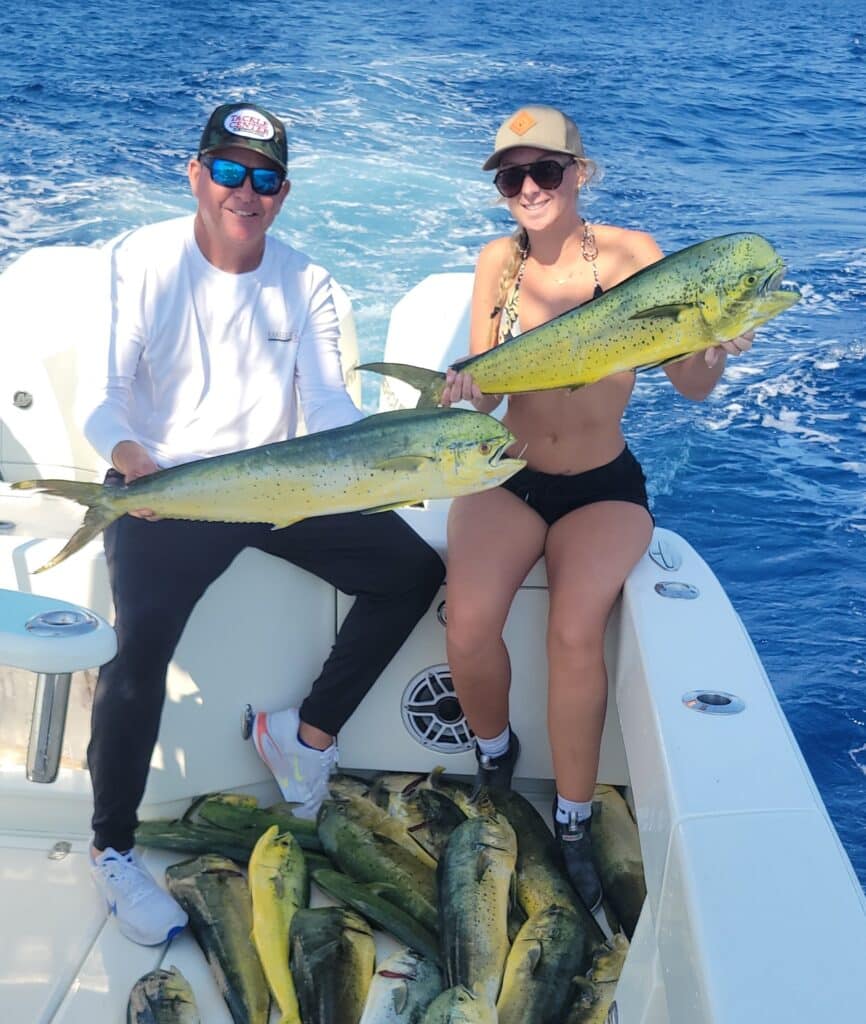
From Our Blog
Resources & Further Reading
NOAA Fisheries – Pacific & Atlantic Mahi-Mahi
FishBase – Coryphaena hippurus

